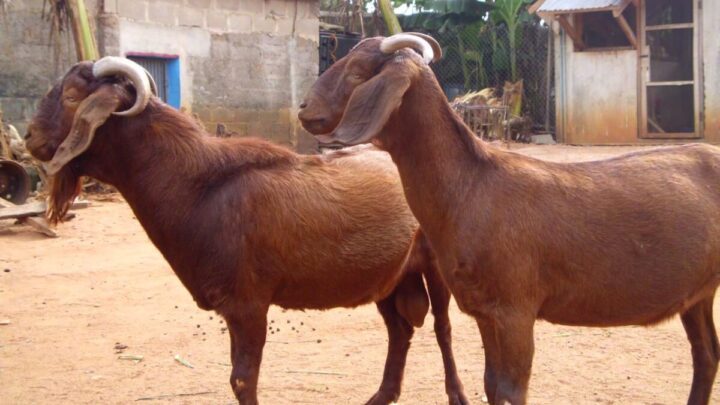Last updated on May 21, 2025
Let’s be real for a second. If you’ve started looking into getting Brahma chickens, you’ve probably noticed something right away: their price tag is often higher than the chickens you might find at your local feed store. And it makes you wonder, why are Brahma chickens so expensive? It’s a fair question! These aren’t just any chickens; they’re often called the “King of All Poultry” for a reason, and that title comes with a bit of a premium. But trust me, once you understand why they cost more, it starts to make a lot of sense. It’s not just about being fancy; there are some solid reasons behind the Brahma chicken price.
I’ve raised these gentle giants myself, and I can tell you firsthand that the initial cost is just one part of the picture. The factors that make them more expensive to buy also influence the cost to raise Brahma chickens. Let’s break down the honest reasons behind that higher Brahma chicken cost.
Quick Answer: Why Do Brahma Chickens Cost More?
So, why are Brahmas so expensive? The main reasons boil down to their impressive size requiring more resources (feed, space), their slow growth rate meaning more time and cost for breeders, and their unique appearance and heritage breed status making them less common and more sought after.
1. They’re Massive Birds — And Big Means More Resources
Okay, this is probably the most obvious reason right off the bat. Brahmas are HUGE! We’re talking roosters that can easily hit 12 pounds or more and hens around 9-10 pounds (Oklahoma State University Breeds of Livestock).
Some roosters can even get up to 18 pounds! You can see examples of their impressive size, like the typical Light Brahma chicken size. Compare that to a Leghorn hen at maybe 4-5 pounds, and you see the difference. It’s like the difference between a teacup poodle and a Great Dane!
Why Size Equals a Higher Price
Why does size equal a higher Brahma chicken price? Simple: bigger birds need more of everything. More space in the incubator, more space in the brooder, and definitely more space in the coop and run.
We’re talking needing at least 4-5 square feet per bird inside the coop, compared to 2-3 square feet for smaller breeds. Plus, they eat more feed – significantly more – over their lifetime compared to smaller breeds.
Hatcheries and breeders have to account for these increased resource costs when setting their prices. It’s just basic economics; more input cost means a higher output price.
Brahma vs. Average Layer: A Quick Comparison
Here’s a quick comparison to give you an idea:
| Feature | Brahma Chicken | Average Layer Breed (e.g., Leghorn) |
| Average Adult Weight | 8.5 – 12+ lbs | 4 – 6 lbs |
| Maturity Speed | Slow (6-18+ months) | Faster (4-6 months) |
| Space Needs (Coop) | More (4-5 sq ft/bird) | Less (2-3 sq ft/bird) |
| Feed Consumption | Higher | Lower |
| Breeding Complexity | More involved (size, feathering) | Generally less complex |
2. Brahmas Grow Slowly (Like, Really Slowly)
We talked about this in the last article, and it’s a major factor in their cost. Brahmas are classic slow growing chicken breeds. While a broiler chicken might be ready for processing in 6-8 weeks, a Brahma takes much longer to reach maturity and even longer to fully fill out.
Sexual maturity is typically 6-8 months, and full physical size can take up to 12-18 months or even longer. You can dive deeper into the Brahma chicken maturity timeline here.
Time and Money: The Breeder’s Investment
Time is money, right? For a hatchery or breeder, keeping chicks and juveniles on feed, in heated brooders, and taking up valuable space for many extra months before they can be sold as mature birds or breeders adds significantly to their operating costs.
They’re investing more time, feed, and labor into each Brahma chick compared to a fast-growing breed. This longer development period directly impacts the Brahma chicken cost.
Quantifying the Feed Cost Difference
To give you a clearer picture, a typical layer breed might eat around 15-17 pounds of feed to reach laying age (around 5 months). A Brahma, growing for 6-8 months just to reach sexual maturity and eating more per day due to its size, will consume significantly more feed to get to that point.
And to reach their impressive full physical size at 12-18 months? They’ll eat substantially more feed over that much longer period. If we estimate a Brahma eats maybe 0.3-0.4 pounds of feed per day as it grows (more than a layer’s 0.22-0.29 lbs/day), that adds up quickly over a year or more.
At an average feed cost of around $0.40 per pound (based on a $20/50lb bag), a Brahma could easily cost a breeder an extra $30-$50 or more in feed alone just to get it to a size where a layer breed would be considered mature. That difference adds up across a flock!
3. Feathered Legs and Fancy Looks Don’t Come Cheap
Let’s face it, Brahmas are stunning. Their dense feathering, including those impressive feathered legs and feet, and their calm, stately presence make them incredibly appealing. They are definitely considered fancy chicken breeds and are popular as show chickens and ornamental chickens.
The Cost of Meeting Breed Standards
But breeding chickens to meet specific breed standards, especially ones with unique physical traits like heavy leg feathering, requires careful selection and dedicated breeding programs. Breeders work hard to produce birds that not only look good but also conform to the standards set by organizations like the American Poultry Association.
This level of selective breeding, focusing on specific looks and body shape, is more involved and time-consuming than simply breeding for production traits. That expertise and effort contribute to the higher Brahma chicken price.
4. Rarity Drives Up the Price
Compared to super common breeds like Rhode Island Reds or Leghorns that are mass-produced for commercial egg laying, Brahmas are less common.
They are considered a heritage breed, meaning they are traditional breeds that were once popular but are not typically used in commercial poultry operations today. This relative Brahma chicken rarity means fewer hatcheries and breeders focus on them.
Supply and Demand in the Chicken World
Why are Brahma chickens expensive because they’re less common? It’s a classic supply and demand situation. If fewer places are breeding and selling Brahmas, the supply is lower. When there’s decent chicken breed demand but limited supply, prices naturally go up.
For example, while a Leghorn chick might cost you $2-$4, a Brahma chick often ranges from $5 to $10 or even more, depending on the hatchery and variety. You’re paying a premium for a bird that isn’t as widely available as the most common backyard breeds.
Price Variations to Consider
It’s worth noting, though, that the exact Brahma chicken price can vary a lot! Buying “straight run” chicks (where you get a mix of males and females, typically cheaper per chick) from a local breeder might be less expensive than ordering sexed pullets (guaranteed females, more expensive) from a large, distant hatchery that requires shipping costs.
Sometimes, hatcheries might have sales or promotions too. So, while they are generally more expensive, there are ways to potentially find them at a lower cost if you do some looking around.
5. Breeding Brahmas Isn’t for Beginners
Getting into breeding chickens is one thing, but consistently producing high-quality Brahmas that meet breed standards and have good health and temperament? That takes skill, experience, and dedication.
Specific Breeding Challenges
Breeding large fowl with specific physical traits presents unique challenges. For example, ensuring good fertility can sometimes be trickier with very large birds, and maintaining the quality of feathering requires attention.
Expertise and Effort Required
Experienced breeders invest years in understanding genetics, selecting the right breeding stock, and maintaining healthy flocks. This expertise is built over time and through trial and error.
When you buy a Brahma chick from a reputable breeder, you’re not just paying for the chick; you’re also paying for the breeder’s knowledge and the quality of their breeding program. This is especially true for specific colors or lines bred for show quality. You can learn more about the complexities of Brahma chicken breeding here.
Let’s dig a little deeper into those breeding challenges. The heavy feathering on their legs and feet, while beautiful, can sometimes get in the way during mating, making successful fertility a bit trickier than with clean-legged breeds. Breeders might need to manage this, which takes extra time and observation.
Plus, that dense feathering can be a spot for mites to hide, requiring diligent pest control, and in wet or freezing conditions, those feathered feet can be prone to frostbite if not managed carefully.
For large fowl in general, including Brahmas, maintaining ideal body condition is key for fertility; overweight roosters or hens can sometimes have reduced breeding success due to physical limitations.
It’s a delicate balance that experienced breeders understand and manage. As one experienced breeder I spoke with put it, “You’re not just throwing a rooster and hens together with Brahmas. You’re actively managing for health, feather quality, and making sure the boys can actually do their job despite all that fluff!”
6. High Demand and Low Supply = $$$
Following on the rarity point, the popularity of Brahmas in the backyard chicken community has surged. People are drawn to their calm nature, impressive size, and unique look. This creates high chicken breed demand.
The Impact on Price
However, because they grow slowly and require more resources (as we’ve discussed), hatcheries and breeders can only produce a limited number of Brahma chicks compared to faster-maturing, smaller breeds.
So, you have a situation where lots of people want Brahmas, but there aren’t endless numbers of chicks available, especially at peak hatching season. This imbalance between high demand and relatively low supply is a significant factor in the higher Brahma chicken price. Sometimes, you might even find yourself on a waiting list!
7. Exotic Color Varieties Raise the Price Even Higher
While Light, Dark, and Buff Brahmas are the most common varieties recognized by the American Poultry Association, there are also rarer colors and patterns out there. Think about varieties like Blue, Splash, or even some of the laced patterns.
Why Rare Colors Cost More
These less common or rare Brahma chickens often come with an even higher price tag. Why? Because it takes even more specialized breeding knowledge and effort to consistently produce birds with these specific genetics and colorations. The breeding pools for these varieties are smaller, and the breeders who work with them are often highly dedicated specialists.
Looking at online listings, you might see hatching eggs for some rare Brahma colors priced significantly higher than standard colors, reflecting the extra effort and limited availability. If you’re seeking a specific, unusual color, expect to pay a premium for that exclusivity and the breeder’s expertise in producing it.
8. They’re Dual-Purpose, Which Adds Extra Value
Brahmas are traditionally a dual-purpose chicken breed. This means they were developed to be good at two things: providing a decent number of large eggs and growing into a substantial bird for meat. While modern commercial breeds often specialize in just one area (like high egg production or rapid meat growth), Brahmas offer a balance.
Balancing Eggs and Meat
For backyard keepers looking for a bird that can contribute to both the egg basket and potentially the dinner table, this dual-purpose nature is a big plus. People are often willing to pay a bit more for a bird that offers this versatility compared to a breed that only excels at one thing.
It’s like getting two benefits in one package! And when it comes to the meat, because they grow slower than fast-track broiler breeds, Brahmas tend to develop a firmer, more flavorful meat with a better texture, which many people who raise their own meat birds really appreciate. It’s a different kind of meat than you’d get from a Cornish Cross, and some would argue, a more desirable one.
9. Care Costs Stack Up Quickly
The initial purchase price is just the beginning, right? The ongoing cost to raise Brahma chickens is also higher than with smaller breeds, and breeders factor some of this into their pricing because they incur these costs during the months they raise the chicks before selling them.
Beyond the Purchase Price
As mentioned, they eat more feed because they’re bigger. This is a significant ongoing expense. A 50lb bag of layer feed might cost anywhere from $15 to $27, and a flock of large birds will go through that faster than a flock of bantams! They also need larger housing, which costs more to build or buy.
Remember that recommendation for 4-5 square feet per bird in the coop? For a flock of 10 Brahmas, you’re looking at a minimum of 40-50 square feet of coop space, plus a much larger run. Their dense feathering, especially on their legs, requires more attention to prevent mites and frostbite, potentially leading to higher costs for bedding or treatments.
While they are generally hardy, any health issue in a large bird might require more significant care. All these factors contribute to the overall backyard chicken pricing for this breed. Understanding feed costs is a big part of raising any flock, and you can see how it adds up when considering things like how many bags of feed are needed for 100 layers per month.
10. People Will Pay More for “Chicken Royalty”
Okay, let’s be a little less technical for a second. There’s an undeniable “wow” factor with Brahma chickens. They are majestic, impressive, and stand out in any flock. They have a certain prestige about them – they are, after all, the “King of All Poultry.”
The Appeal of Owning a Majestic Breed
This desirability, this sense of owning something a bit special or regal, also plays a role in the price. People are often willing to pay a bit extra for a breed that is so visually striking and has such a calm, friendly reputation. It’s not just about eggs or meat; it’s about the enjoyment and pride of having these magnificent birds in your backyard. That perceived value and prestige contribute to the higher Brahma chicken cost.
For example, I’ve seen people at poultry shows or on online forums talk about how their Brahmas are the stars of their flock, the ones visitors always ask about. There’s a certain satisfaction in having these impressive birds, and that desirability translates into a willingness to pay more for them compared to a more common-looking chicken, even if the egg production or meat yield were similar.
It’s like choosing a purebred dog with a distinguished look versus a mixed breed – both can be wonderful companions, but the perceived value and cost are often different due to breed recognition and appearance.
Wrapping it Up: Are Brahmas Worth the Higher Price?
So, why are Brahmas so expensive? It boils down to their size, slow growth, unique physical traits, relative rarity, the expertise required to breed them well, high demand, and their dual-purpose nature. Plus, there’s that little bit of “chicken royalty” status!
The Long-Term Value Proposition
For me, and for many keepers of these wonderful birds, the answer is a resounding YES. The initial Brahma chicken price and the slightly higher cost to raise Brahma chickens are absolutely worth it for the calm temperament, impressive presence, and reliable production you get from a healthy, mature Brahma. They add so much personality and beauty to the backyard.
And let’s think about the long-term value beyond just eggs and looking pretty. Brahmas are incredibly cold hardy thanks to their dense feathering and pea combs. This means they handle tough winters much better than many other breeds, potentially reducing the need for supplemental coop heating (saving you money on electricity!) and keeping them happier and healthier when the temperature drops.
Their calm nature also means less stress in the flock, which can lead to fewer injuries from fighting and generally healthier birds overall – potentially saving you on vet bills down the line.
While they cost more upfront and eat more, their hardiness and easygoing personalities can translate into a more robust, lower-stress, and potentially less expensive flock to manage over their lifespan compared to more flighty or delicate breeds. That’s a value that’s hard to put a price on!
Summary of Why Brahmas Cost More
Here’s a quick summary of the top reasons why Brahmas cost more:
- They’re Massive Birds: Bigger birds need more feed and space.
- They Grow Slowly: More time and resources invested by breeders.
- Fancy Feathering & Looks: Requires specific breeding effort.
- Relative Rarity: Lower supply than common breeds.
- Breeding Expertise: Takes skill to produce quality birds.
- High Demand: Popularity outpaces supply.
- Exotic Colors: Rare varieties cost even more.
- Dual-Purpose Value: Offer both meat and eggs (with quality meat).
- Higher Care Costs: More feed, larger housing, specific grooming.
- “Chicken Royalty” Appeal: People pay for their majestic status.
Thinking about these points might even make for a cool infographic!
What do you think? Are the reasons for the higher Brahma chicken cost understandable? Share your thoughts in the comments below!
Enjoyed this article? Share it with your fellow chicken enthusiasts on social media!


